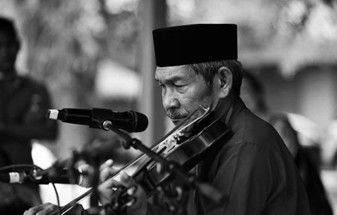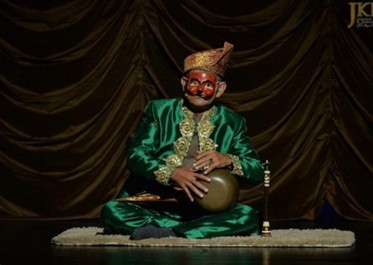ARTS AND CULTURE INFORMATION GATEWAY
Immerse yourself in the colorful world of art and culture! From traditional heritage to contemporary works, discover uniqueness that reflects the nation's identity and identity
AWANG BATIL
Picture
2
Video
No record
Today's Visitor
6
Number of Visitors
1422
Introduction and history
Awang Batil is the title given to a traditional storyteller in the state of Perlis. The art of storytelling, known as lipur lara, is a form of oral tradition, and interestingly, Awang Batil can only be found in Perlis. Initially, this storytelling art was called Awang Belanga because it used a belanga (a traditional cooking pot) as its accompanying musical instrument. However, since the back of the belanga was often covered in soot, the storytellers replaced it with a batil—a water container made of brass. The sound produced by the brass was also sharper and more resonant than the belanga. From then on, the storytellers were called Awang Batil.
In the past, Awang Batil would travel from village to village and house to house, particularly to homes hosting wedding ceremonies, to perform his stories. Typically, the performances were held in a small elevated hut, about three to four meters high. The audience would sit around the hut to listen to the tales. This was how the Malay community entertained themselves for generations before the advent of technology.
Awang Batil inherited a wealth of folk tales. Some of these stories were serialized and continued over several nights. Villagers would gather to listen to these tales, which often included elements of humor. During the storytelling, Awang Batil would strike the batil with his fingers. In certain scenes, he would don two masks alternately to portray characters such as the Hulubalang (warrior) or the Ahli Nujum (soothsayer). These wooden masks, usually painted red and white, were distinctive features of Awang Batil's solo performances.
The performance later evolved to include other musical instruments, such as the violin, flute, rebana (a type of drum), and gendang terinai (traditional drum), making the storytelling more engaging.
Before beginning a performance, Awang Batil would conduct a traditional ritual. This involved filling the batil with water, sprinkling it on his head and face, chewing three slices of betel nut, burning incense, and holding the batil on his lap. This ritual, which took about half an hour, was called bertabik or a salutation to the host, his teacher, and a prayer for safety.
"Hei! Riuh rendah gegak gempita,
Inilah hamba nak mula cerita."
● Local wisdom in utilizing everyday tools as musical instruments.
● Oral literature with high didactic value.
● A medium for entertainment and education.
● Unifying communities of the past.
● Red and white wooden mask
● Batil: Brass water container
● Biola: Violin
● Gendang: Drum
● Serunai: Flute
The bertabik ceremony, which involves offering greetings or respect to the surroundings, is performed, the batil is struck, and thus begins the stories from Awang Batil.
Now, in his golden years, Encik Ramli has been recognized as a “Living Heritage” by the United Nations Educational, Scientific, and Cultural Organization (UNESCO). He has also expressed deep concern about the potential extinction of the Awang Batil art form. Let us work together to preserve our traditional cultural heritage so that this unique art form will not fade with time.
Among the awards and achievements he has received are:
1. National Living Heritage Figure 2015
2. Traditional Cultural Production Night Award, Perlis State 1983
3. Perlis State Arts Activist Award 2002 (Terinai Music Category)
4. Perlis State Arts and Culture Figure Award 2012
5. Cendana Budi Figure Award 2015
Reference Source
https://geopark.perlis.gov.my/tour-item/awang-batil/
https://pemetaanbudaya.jkkn.gov.my/senibudaya/detail/749/pengenalan
https://www.pusaka.org/communities-awang-batil
2016. Ghulam Sarwar Yousof. One Hundred and One Things Malay.
https://www.google.com.my/books/edition/One_Hundred_and_One_Things_Malay/AdZcCwAAQBAJ?hl=en&gbpv=1&dq=one+hundred+and+one+things+malay+ghulam-sarwar+yousof&pg=PT191&printsec=frontcover
Location
State JKKN Contact Information
Siti Rohayu binti Muhamad
Cultural Officer
Jabatan Kebudayaan dan Kesenian Negara, Perlis
Kompleks JKKN Perlis
Persiaran Wawasan Kangar
01000 Kangar
PERLIS
019-504 0015
Use the form below to contact the Informant/Figure/Editor/Researcher directly. We will respond to your inquiry as soon as possible!

 Kampung Pokok Sena, 02500 Chuping, Perlis
Kampung Pokok Sena, 02500 Chuping, Perlis






